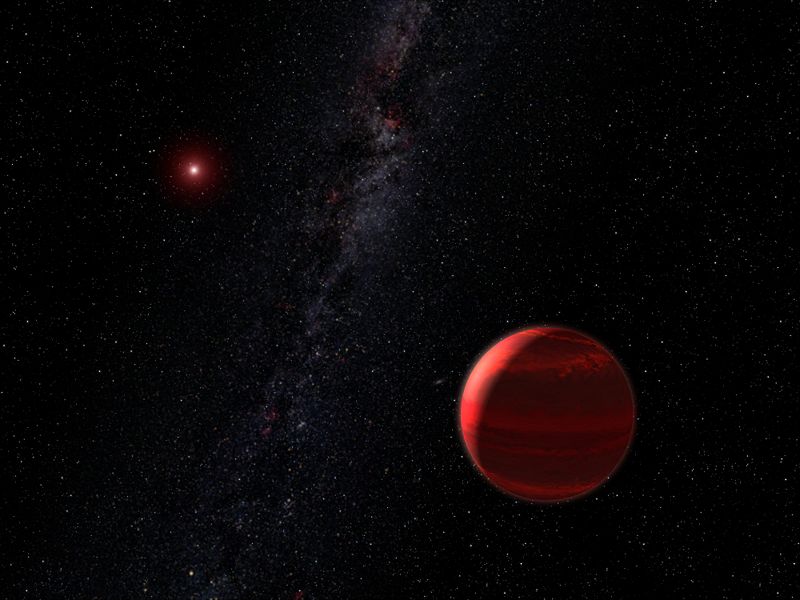[/caption]
Our Sun is such a familiar sight in the sky that you might think stars like our Sun are common across the Universe. But the most common stars in the Universe are actually much smaller and less massive than the Sun. The Universe is filled with red dwarf stars.
Astronomers categorize a red dwarf as any star less than half the mass of the Sun, down to about 7.5% the mass of the Sun. Red dwarfs can’t get less massive than 0.075 times the mass of the Sun because then they’d be too small to sustain nuclear fusion in their cores.
Red dwarfs do everything at a slower rate. Since they’re a fraction of the mass of the Sun, red dwarfs generate as little as 1/10,000th the energy of the Sun. This means they consume their stores of hydrogen fuel at a fraction of the rate that a star like the Sun goes through. The largest known red dwarf has only 10% the luminosity of the Sun.
And red dwarfs have another advantage. Larger stars, like the Sun, have a core, surrounded by a radiative zone, surrounded by a convective zone. Energy can only pass from the core through the radiative zone by emission and absorption by particles in the zone. A single photon can take more than 100,000 years to make this journey. Outside the radiative zone is a star’s convective zone. In this region, columns of hot plasma carry the heat from the radiative zone up to the surface of the star.
Red dwarfs have no radiative zone, which means that the convective zone comes right down to the star’s core and carries away heat. It also mixes up the hydrogen fuel and carries away the helium by-product. Regular stars die when they use up just the hydrogen in their cores, while red dwarfs keep all their hydrogen mixed up and will only die when they’ve used up every last drop.
With such an efficient use of hydrogen, red dwarf stars with 10% the mass of the Sun are through to live 10 trillion years. Our own Sun will only last about 12 billion or so.
You might be interested to know that the closest star to Earth, Proxima Centauri, is a red dwarf star. Unfortunately, these stars are so small and dim that they can’t be seen without a telescope.
We have written many articles about stars on Universe Today. Here’s an article about how red dwarf stars might have tiny habitable zones. And here’s an article about how they destroy their dust disks.
Want more information on stars? Here’s Hubblesite’s News Releases about Stars, and more information from NASA’s imagine the Universe.
We have recorded several episodes of Astronomy Cast about stars. Here are two that you might find helpful: Episode 12: Where Do Baby Stars Come From, and Episode 13: Where Do Stars Go When they Die?
References:
http://en.wikipedia.org/wiki/Red_dwarf
http://adsabs.harvard.edu/full/1953ApJ…118..529O

